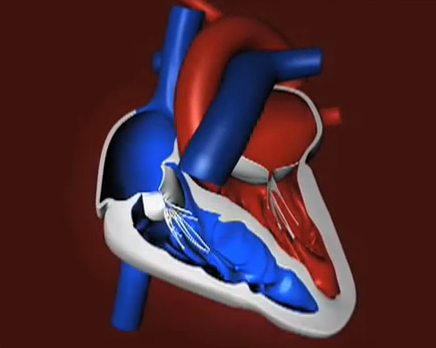The resting pulse or heart rate is measured so as to find out if it is within the normal range. All of us have seen and felt the heart rate increase substantially while exercising. Resting heart rate refers to the pulse rate which is measured in a state of full rest, or after one has rested for around ten minutes. Resting heart rate refers to the number of times that the heart ‘beats per minute’, i.e. bpm, when a person is breathing slowing, sitting still, or lying down.
It may also be noted that identifying the normal RHR or ‘Resting Heart Rate’ also aids in assessment of the overall cardiac health. It lets a doctor verify whether or not the heart is efficiently pumping blood, and whether or not all the organs in the body are getting the necessary amounts of oxygen and blood.
Heart rate chart
The resting heart rate chart for men, women, and children is presented below.
Resting heart rate chart for men
| Age | Excellent | Average | Poor |
| 18 to 25 | 56 to 61 | 70 to 73 | 82 plus |
| 26 to 35 | 55 to 61 | 71 to 74 | 82 plus |
| 36 to 45 | 57 to 62 | 71 to 75 | 83 plus |
| 46 to 55 | 58 to 63 | 72 to 76 | 84 plus |
| 56 to 65 | 57 to 61 | 72 to 75 | 82 plus |
| 65 Plus | 56 to 61 | 70 to 73 | 80 plus |
Resting heart rate chart for women
| Age | Excellent | Average | Poor |
| 18 to 25 | 61 to 65 | 74 to 78 | 85 plus |
| 26 to 35 | 60 to 64 | 73 to 76 | 83 plus |
| 36 to 45 | 60 to 64 | 74 to 78 | 85 plus |
| 46 to 55 | 61 to 65 | 74 to 77 | 84 plus |
| 56 to 65 | 60 to 64 | 74 to 77 | 84 plus |
| 65 plus | 60 to 64 | 73 to 76 | 84 plus |
Resting heart rate chart for boys
| Age (In Years) | Systolic Range | Diastolic Range |
| 3 | 104 to 113 | 63 to 67 |
| 4 | 106 to 115 | 66 to 71 |
| 5 | 108 to 116 | 69 to 74 |
| 6 | 109 to 117 | 72 to 76 |
| 7 | 110 to 119 | 74 to 78 |
| 8 | 111 to 120 | 75 to 80 |
| 9 | 113 to 121 | 76 to 81 |
| 10 | 114 to 123 | 77 to 82 |
| 11 | 116 to 125 | 78 to 83 |
| 12 | 119 to 127 | 79 to 83 |
Resting heart rate chart for girls
| Age (In Years) | SystolicRange | Diastolic Range |
| 3 | 104 to 110 | 65 to 68 |
| 4 | 105 to 111 | 67 to 71 |
| 5 | 107 to 113 | 69 to 73 |
| 6 | 108 to 114 | 71 to 75 |
| 7 | 110 to 116 | 73 to 76 |
| 8 | 112 to 118 | 74 to 78 |
| 9 | 114 to 120 | 75 to 79 |
| 10 | 116 to 122 | 77 to 80 |
| 11 | 118 to 124 | 78 to 83 |
| 12 | 120 to 126 | 79 to 82 |
Healthy or Normal Resting Heart Rate
The medical term for a high heart rate for long periods is tachycardia, while consistently low resting heart rate is referred to as bradycardia. Athletes have a healthy and strong heart as they engage in extensive physical training. Only minimal effort is required by such strong hearts to pump a higher quantity of blood. Hence well-trained athletes tend to have a low resting heart rate. A high resting heart rate indicates that the heart needs to put in a lot of effort to pump the required amounts of blood to the varied body organs.
Adults have a normal resting heart rate ranging between 60 and 100. Newborns have an RHR between 100 and 160 till age 1. Children between 1 and 10 years have a normal RHR between 70 and 120, while it falls between 60 and 100 in teens aged 11 to 17. The normal resting heart rate in conditioned athletes ranges between 40 and 60 bpm.
Some factors which can affect the heart rate includes intensity of physical exertions, the position and size of the body, intake of certain medicines, the air/room temperature, the general fitness or health, and intense emotions such as anxiety, fear, panic attacks, anger, etc. Women also tend to elicit a slightly greater resting heart rate than men.

The heart rate of children differs as per weight, level of fitness, gender, lifestyle, etc. The blood pressure also tends to vary in children and the alterations in blood pressure can be measured with each heartbeat. The heart rate chart presented above shows the normal figures for systolic/maximum and diastolic/minimum pressures in children.
It is possible to predict the required heart rate during exercising after measuring the resting heart rate. People can decrease or increase the intensity of physical training after measuring their MHR or maximum heart rate permissible during exercising. Exercising over 85% of the MHR is not recommended.
Exercising with extremely high levels of heart rate is not beneficial. In fact, it increases the risk to orthopedic and cardiovascular conditions. Individuals who feel that they have an abnormal heart rate should consult a doctor.


